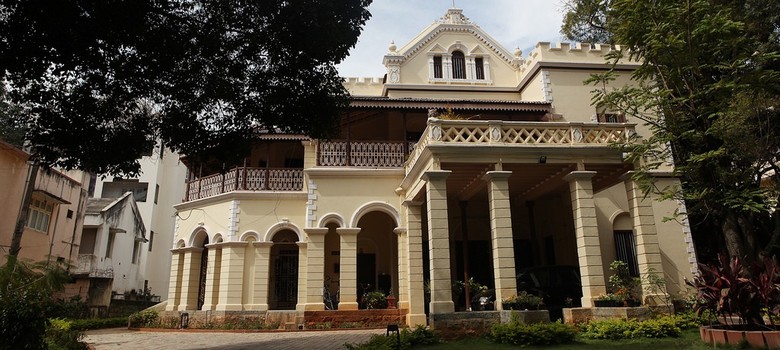
When the century-old Cash Pharmacy building in Bangalore was torn down in 2006, many Bangaloreans gasped in despair. The building at the corner of Residency and St Mark’s road was a landmark of the central business district and a sentinel among the bustle of commuters, students and shoppers. Cash Pharmacy is one of many heritage buildings, like the iconic Victoria Hotel and Sir M Visveswarya’s house, that has vanished in recent years or morphed into a mall and high-rise structure.
An exhibition now underway in the city attempts to quantify this change. The Indian National Trust for Art and Cultural Heritage, an organisation that taken on heritage conservation, has put together a display of photographs titled “Bangalore Then and Now” that documents this loss in architectural heritage. The display contrasts photographs taken of heritage sites in 1985 during INTACH’S first inventory of heritage buildings with recent photographs of the same sites taken over the last six months. Among the 823 buildings that INTACH’s KN Iengar documented in 1985, only 43% stand today.
“The feeling has always been there that Bangalore has been losing its heritage but this puts a number to that,” said Meera Iyer, co-convener at INTACH Bangalore organizer of the exhibition. “It’s also the residences that have been mostly lost. In some areas like Basavangudi there is only about 20% left. In Benson town, where in the 1985 list there were 23, there now are only two left.”
Photographer Perumal Venkatesan, known as PeeVee, took many of the “now” photos for the exhibition and noted that distinct change in architecture. Almost all the monkey-topwindow guards, Mangalore tiles and big verandahs of 1985 have given way to completely glazed, blue-coloured high-rise buildings.
Venkatesan had very mixed feelings about the changing face of the city. “Some of these are 20,000 square foot plots.,” he said. “If someone has to clean that up they need 20 people working or if they have to whitewash the compound wall they need to spend Rs 4 lakh-Rs 5 lakh. That’s the kind of money involved in maintenance. If the government can do something about it, that would be wonderful.”
Bangalore does not have any laws to preserve its heritage buildings and a draft legislation that INTACH has helped draw up has been languishing in the government’s file rooms for six years.
Iyer of INTACH feels that it will be good for Bangalore to take cues from outside on how to preserve its remaining heritage buildings, whether from Mumbai’s regulations to preserve the façade of its heritage buildings in areas like Fort and Colaba or Singapore’s initiatives to pay owners to conserve buildings or even Kerala’s Muziris hamlet where the government has restored traditional houses in return for residents keeping parts of their houses open to public.
Meanwhile, the photo exhibition at Cubbon Park comparing the city’s old and new buildings is drawing in Bangalore’s crowds. Here are some examples.
Vasavi Temple Road, Basavangudi: Five or six properties built in the late 1920s or early 1930s that are typically Indian-style two-storey houses with porticoes in front. These buildings were very different from those in Bangalore’s cantonment areas


Golden Threshhold, St Mark’s Road: This house belonged to the father of artist and cartoonist Mario Miranda. In a 2005 newspaper interview, Miranda described how his father bought the site from an auctioneer and had the garden, with an avocado tree and a lemon tree, landscaped by someone from the UK. The house and garden have been replaced by a banquet hall called House of Lords.


Antony Nicholas Road: This modest house was praised by KN Iengar during his 1985 inventory as “a nice example of how middle class house owners might design their houses rather than make the craziest, wasteful designs of the present decade”.


Vema Lodge: One of the few buildings that hasn’t changed much in the last 30 years. The top half of the building is the owner’s residence and the bottom has been rented out as a couple of apartments.


[“source-scroll”]
